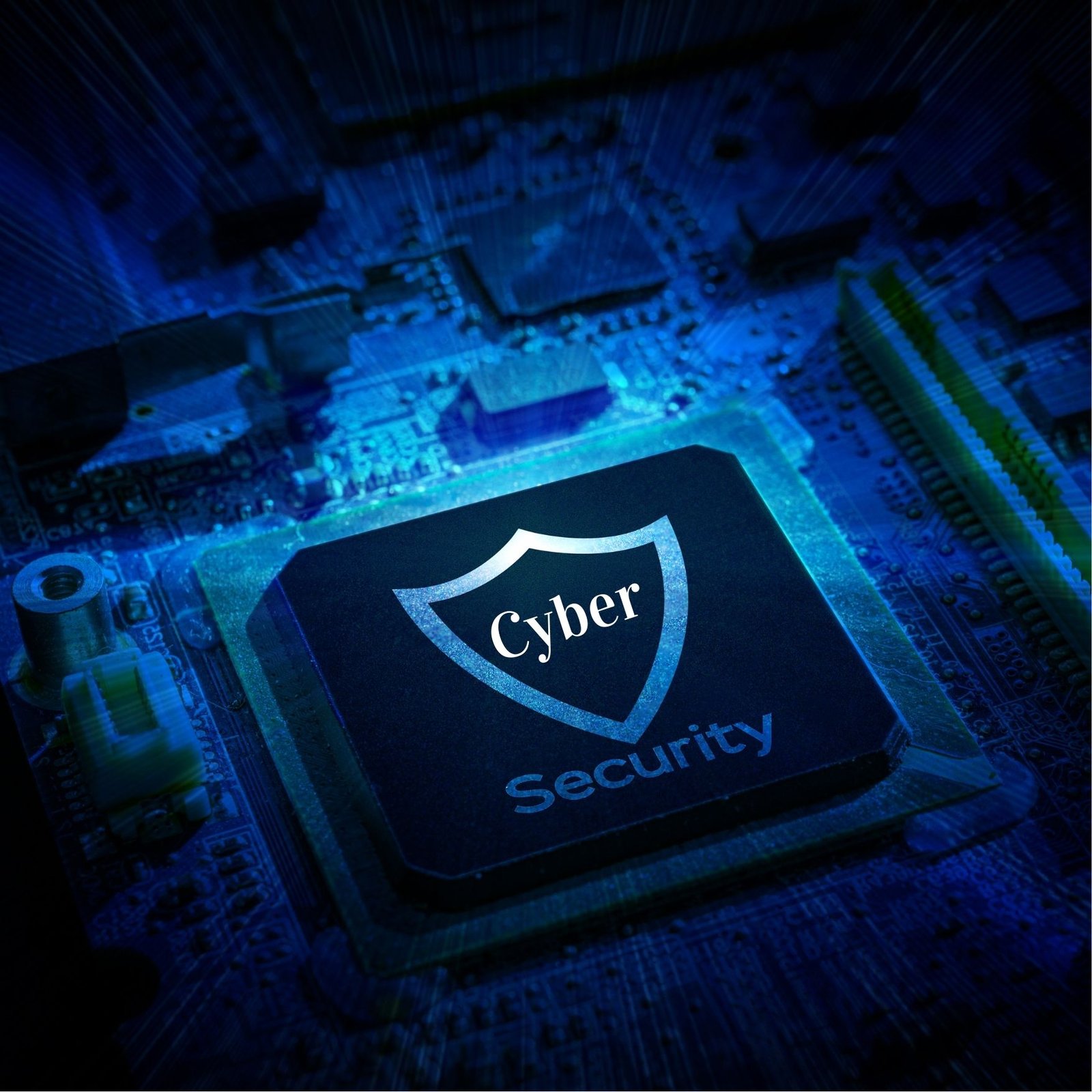Table of Contents
Introduction
Cybersecurity is no longer a luxury—it’s a necessity. From social media accounts to online banking, our digital lives are constantly threatened. You might think, “I’m just a regular person. Why would hackers target me?” But that’s precisely the mindset that cybercriminals exploit. Every piece of your data has value, whether it’s your login credentials, financial information, or browsing habits.
In 2025, the frequency and sophistication of cyberattacks have reached new heights. Phishing emails look scarily real. Malware can disguise itself as legitimate software. Even your smart fridge could be turned into a botnet zombie if left unsecured. The consequences? Data breaches, identity theft, financial loss, and, in severe cases, complete digital lockout through ransomware.
The good news is you don’t need to be a tech genius to safeguard your digital footprint. By arming yourself with the right tools, you can instantly boost your cybersecurity and drastically lower your risk. Think of these tools as the digital equivalent of locks, alarms, and surveillance systems for your home—but for your devices and data.
Let’s dive into the five essential tools to stay safe online.
Tool 1 – Antivirus Software
First things first—antivirus software. This is your basic line of defense, your digital gatekeeper. While the name suggests it only fights viruses, modern antivirus programs protect against many threats, including spyware, ransomware, worms, trojans, and phishing attacks.
Think of antivirus software as a constantly alert security dog. It sniffs out suspicious files, behaviors, and intrusions and then either neutralizes them or warns you before they do any harm. It’s not just about scanning files anymore—many of these tools now come with AI-driven threat detection and behavior monitoring.
Top Antivirus Tools in the Market:
- Bitdefender: Known for high detection rates and low impact on system performance.
- Norton 360: Offers comprehensive protection, including VPN and cloud backup.
- Kaspersky: Robust detection capabilities with a simple interface.
- McAfee: Great for families and multi-device coverage.
- Windows Defender: Surprisingly powerful and free for Windows users.
How to Pick the Right Antivirus Software
Not all antivirus tools are created equal. You’ll want something practical, lightweight, and user-friendly. Here’s what to consider:
- Detection Rate: Look for software with a high malware detection rate, preferably verified by independent labs like AV-Test or AV-Comparatives.
- Real-Time Protection: It should be able to scan files on the fly and alert you of threats immediately.
- Automatic Updates: Cyber threats evolve fast. Your antivirus should receive frequent updates to stay ahead of new threats.
- Low System Impact: It shouldn’t slow down your computer or hog too many resources.
- Extra Features: A good antivirus may also include firewall protection, parental controls, or a VPN as part of the package.
Tool 2 – Firewall Protection
Imagine your digital life as a house. A firewall is a sturdy fence with a locked gate that controls who gets in and who stays out. It’s one of the oldest and most effective tools in cybersecurity, yet many people overlook it.
A firewall monitors incoming and outgoing traffic, allowing or blocking data packets based on predetermined security rules. This is vital, especially if you’re on an unsecured network or dealing with sensitive data.
There are two types:
- Hardware Firewalls: These are usually built into routers and are great for home and office networks.
- Software Firewalls: Installed on individual devices; ideal for personal use.
Best Firewall Solutions:
- pfSense: Open-source and powerful, ideal for advanced users.
- GlassWire: Combines firewall capabilities with a visual network monitor.
- ZoneAlarm: Simple and effective for personal computers.
- Comodo Firewall: Great for granular control and customization.
How Firewalls Prevent Unauthorized Access
They work by establishing a set of rules that dictate what kind of traffic is allowed to pass through your network. For example, a firewall might block all traffic from a suspicious IP address range or prevent a specific application from accessing the internet.
With a good firewall, even if a hacker tries to probe your system, they’re more likely to hit a dead end.
Tool 3 – Password Managers
Let’s be real—trying to remember every password is like juggling flaming swords. Most people reuse the same weak password across multiple accounts or write it down somewhere unsafe. That’s a digital disaster waiting to happen.
Password managers are your memory’s best friend in the digital world. They create, store, and autofill complex, unique passwords for all your accounts. You only need to remember one master password; the software takes care of the rest.
Why Password Managers Are a Game-Changer
Hackers thrive on weak or reused passwords. Credential stuffing attacks—where hackers use stolen usernames and passwords to break into other accounts—are one of the most common threats online. With a password manager, every login you have is strong, unique, and nearly impossible to guess or crack.
They also help you avoid phishing traps. When you visit a fake site trying to mimic a legitimate one, a password manager won’t autofill your credentials because the URL doesn’t match the stored one.
Best Password Managers for 2025:
- 1Password: Trusted by individuals and businesses alike. Excellent interface and security.
- Bitwarden: Open-source and affordable with excellent encryption standards.
- Dashlane: Offers dark web monitoring and a built-in VPN.
- LastPass: Widely used with cloud-based syncing.
- NordPass: From the makers of NordVPN, it is sleek and user-friendly.
Tips for Using Password Managers Effectively
- Set a Strong Master Password: This is your golden key. Make it long, random, and unforgettable (to you).
- Enabling two-factor Authentication (2FA) adds an extra layer of protection even if someone gets your master password.
- Use Autofill Wisely: Ensure your autofill is turned on only for secure devices to avoid accidental credential drops.
- Keep It Synced Across Devices: Most tools offer cloud-based syncing. Make sure your phone, laptop, and tablet are all connected.
- Regularly Audit Your Vault: Most password managers will alert you to weak or duplicate passwords—don’t ignore them.
Password managers aren’t just for tech geeks. They’re a necessity for anyone who wants to stop living in password chaos and start securing their digital life smartly.
Tool 4 – Virtual Private Network (VPN)
If you’ve ever used public Wi-Fi at a café, airport, or hotel without a VPN, you’ve left the front door to your data open. A VPN (Virtual Private Network) encrypts your internet connection, making your online actions private and secure—even on unsecured networks.
What a VPN Actually Does
Think of a VPN as a secure tunnel that connects your device to the internet. Everything that travels through that tunnel is encrypted, meaning no one—not hackers, your ISP, or even government snoops—can see what you’re doing online.
It also hides your IP address, masking your actual location. This not only helps you stay private but also allows you to bypass geographic restrictions (hello, streaming sites!).
Top VPN Providers in 2025:
- ExpressVPN: Fast, reliable, and very secure.
- NordVPN: Excellent for speed and privacy with a no-logs policy.
- Surfshark: Affordable with unlimited device connections.
- CyberGhost: Great for beginners with simple UI.
- ProtonVPN: Created by CERN scientists with a focus on transparency.
Key Features to Look for in a VPN
- No-Logs Policy: Ensure your VPN doesn’t track or store your online activities.
- Strong Encryption: Look for AES-256-bit encryption and modern tunneling protocols like WireGuard or OpenVPN.
- Server Variety: The more server locations a VPN has, the better your chances of finding a fast and secure connection.
- Kill Switch: This automatically disconnects your internet if the VPN connection drops, so your data isn’t suddenly exposed.
- Multi-Platform Support: If necessary, ensure that your VPN works on Windows, Mac, iOS, Android, and even routers.
VPNs are essential for online privacy, especially when data collection is rampant and cybercriminals are always lurking.
Tool 5 – Multi-Factor Authentication (MFA)
Passwords alone are no longer enough. Even the strongest password can be stolen, guessed, or phished. That’s where multi-factor Authentication (MFA) comes in. It requires you to verify your identity using two or more methods—something you know (password), something you have (phone or token), or something you are (fingerprint or face scan).
How MFA Stops Unauthorized Logins
Even if a hacker can get your password, they can’t get into your account without the second factor. It’s like needing a key and a fingerprint to open a safe.
MFA is already used by banks, email providers, and major platforms like Google and Microsoft. But many users still don’t enable it, thinking it’s a hassle. In reality, it takes just a few seconds to set up—and could save you from a world of trouble.
Best MFA Apps and Devices:
- Google Authenticator: Simple and widely compatible.
- Authy: Offers cloud backups and multiple device syncing.
- Microsoft Authenticator: Great for business and personal accounts.
- YubiKey: A physical key that plugs into your device for hardware-based security.
- Duo Security: Popular among enterprises for robust 2FA/MFA integration.
MFA Implementation Tips
- Combine MFA with Password Managers: This creates a dual barrier that’s nearly impossible for hackers to break through.
- Educate Others: If you manage a team or family, ensure everyone understands the importance of MFA.
- Use MFA Everywhere You Can: Email, social media, cloud storage, banking—anywhere it’s offered.
- Backup Codes: Store your backup codes securely if your device gets lost or stolen.
MFA is like adding a second lock to your door. It’s a simple step that can protect you from some of the most common and damaging cyber threats.
Cyber Hygiene Best Practices
So, you’ve got the right tools—but cybersecurity isn’t just about software. It’s also about habits. Your daily digital behavior can either strengthen your online defense or leave the door wide open for attackers. That’s where cyber hygiene comes in—your routine maintenance for digital safety.
Daily Habits That Strengthen Cybersecurity
- Think Before You Click: One of the easiest ways hackers get in is through phishing emails. Never click on suspicious links or open attachments from unknown senders.
- Lock Your Devices: Always use strong PINs or biometric locks on your phone and computer. It’s a simple but powerful habit.
- Log Out When Done: Logging out prevents unauthorized access if someone else uses the device, especially on shared or public computers.
- Limit Permissions: Apps don’t need access to everything. Don’t let your flashlight app read your contacts.
Routine Checks for Optimal Safety
- Update Software Frequently: Which pop-ups do you ignore? They often include critical security patches.
- Backup Data Regularly: Use cloud storage or an external hard drive. If ransomware hits, you won’t lose everything.
- Review Account Activity: Many platforms like Google or Facebook show recent login history. Is anything odd? Take action.
- Use Secure Networks Only: Public Wi-Fi without a VPN is a no-go. Always protect your connection when accessing sensitive information.
Train Your “Digital Reflexes”
Much like brushing your teeth, good cyber hygiene should become second nature. Create strong passwords, turn on two-factor Authentication, and stay alert. These aren’t just good habits—they’re your first line of defense.
In the digital world, you’re only as safe as your weakest habit. Mastering cyber hygiene means you’re not just depending on tools but proactively protecting your digital identity.
How to Integrate All Tools
Having antivirus software, a VPN, and a password manager is one thing. But these tools need to work together like a well-oiled machine to fortify your cybersecurity. Think of it as assembling your security squad—each tool has its job, but they’re most powerful when unified.
Create a Layered Defense
This is known as the “defense-in-depth” strategy. By layering multiple tools, you reduce the risk of a single point of failure. For example:
- Antivirus stops malware at the file level.
- The firewall blocks unauthorized network access.
- VPN hides your traffic from snoopers.
- Password manager ensures login security.
- MFA acts as a failsafe if credentials are compromised.
It’s like locking your front door, setting an alarm, and having a security camera. Each one alone is good, but together—they’re formidable.
Build a Security-First Mindset
Tools are only as good as the person using them. Make cybersecurity part of your lifestyle:
- Encourage friends and family to use secure practices.
- Share tools and tips, especially with non-tech-savvy folks.
- Keep learning. Cybersecurity evolves, and so should your defenses.
Budget-Friendly Ways to Stay Secure
Don’t assume strong security has to be expensive:
- Windows Defender + Bitwarden + ProtonVPN (free plan) + Google Authenticator can protect you on a budget.
- Use trial versions to test premium tools.
- Look for bundled software—some antivirus suites include firewalls and password managers.
Integrating your tools isn’t just about software compatibility—it’s about strategy. You’re building a fortress, not a house of cards.
Future-Proofing Your Cybersecurity
Today’s tools might not be enough for tomorrow’s threats. Cybercriminals use AI, machine learning, and sophisticated social engineering techniques to outsmart even the most vigilant users. That’s why future-proofing your security is critical.
Anticipating Emerging Threats
- AI-Powered Attacks: Hackers are starting to use AI to generate convincing phishing emails or crack passwords.
- IoT Vulnerabilities: We increase our attack surface by connecting more smart devices on the surface of s to the i
- Deepfakes and Identity Theft: Manipulated videos and voice clones can be used for fraud.
Staying ahead means reading up on new trends and adjusting your defenses accordingly.
AI and Cybersecurity Tools
On the bright side, AI is also a powerful weapon for cybersecurity:
- AI-based antivirus can detect behavior anomalies before a threat becomes known.
- Intelligent firewalls can adapt in real time to changing attack vectors.
- Biometric Authentication is becoming more secure and widespread.
Adapt and Evolve
- Regular Tool Audits: Are your tools still the best in class? Don’t be afraid to switch if something better comes along.
- Training and Education: Stay updated with online courses, blogs, or YouTube channels dedicated to cybersecurity.
- Automation: Set up automated scans, updates, and backups to protect you even when you forget.
The internet will only get more complicated and dangerous. Future-proofing means building flexibility and resilience into your cybersecurity setup.
Conclusion
If you’re still asking whether cybersecurity is worth the effort, imagine waking up to your bank account emptied or your identity stolen. It’s not paranoia; it’s preparation.
Let’s recap the five essential tools to boost your cybersecurity instantly:
- Antivirus Software: Your first layer of defense.
- Firewall Protection: The digital gatekeeper.
- Password Managers: Say goodbye to weak passwords.
- VPN: Keep your identity and data hidden.
- Multi-Factor Authentication (MFA): Because one password isn’t enough.
Pair these tools with good cyber hygiene, integrate them into a solid strategy, and stay future-ready. The threats are real, but with the right approach, so is your defense.









